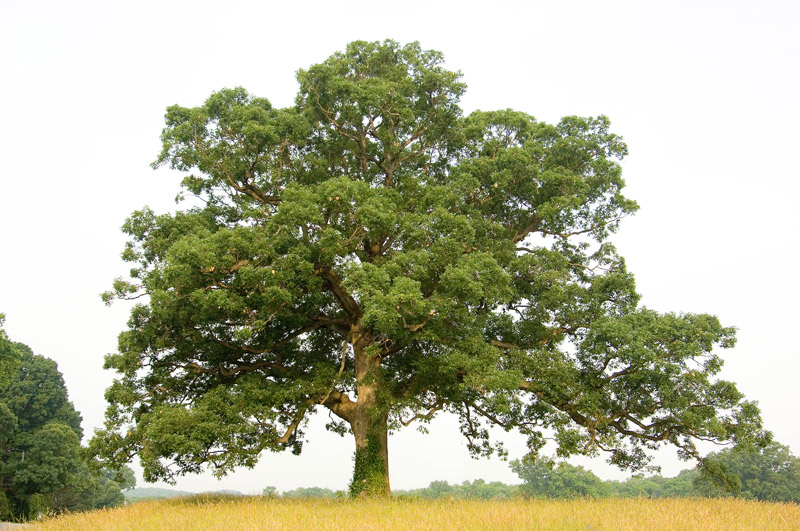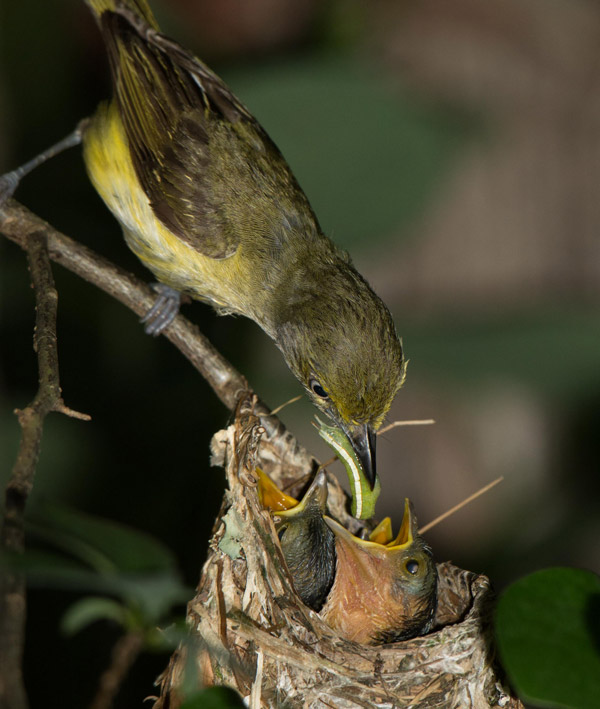

Doug Tallamy offers advice for Earth Day: youtube.com/watch?v=hk7pzHw2XOc
Planting for the planet
Video by Jeffrey C. Chase; photo illustration by Jeffrey C. Chase and Evan Krape; photos by Douglas W. Tallamy April 21, 2021
UD’s Doug Tallamy says ‘go for the oak’
The saying “From tiny acorns, mighty oaks grow” reminds us that great things can come from small, humble beginnings.
It also points to an easy way each one of us can turn inspiration into action to “Restore Our Earth” — the theme of Earth Day 2021 on Thursday, April 22.
Doug Tallamy, professor of entomology and wildlife at the University of Delaware, says we need look no further than our own yards to make positive change — whether that’s at your house, apartment, the building where you work or go to school, or the local park you visited so often during the past year to clear your mind and lift your spirits.
We can and must make strategic choices about what we plant there to support wildlife and the environment that sustains us — and in North America, the very best tree we can plant is an oak, Tallamy says in his new book, The Nature of Oaks. It’s been the focus of recent articles in the New York Times and the Washington Post, among many other media.

Tallamy is well-known for planting the seeds of change — from his seminars for UD students to his presentations to garden clubs across the nation. UDaily checked in with the environmental champion to find out what’s on his mind this Earth Day.
Q. What does Earth Day mean to you?
Tallamy: It’s an opportunity to remind people that our only option for continued presence on Planet Earth is to keep its life-support systems healthy. That doesn’t just mean doing things that are temporarily good for humans. It means keeping all the species that comprise nature in good form, because without them, the ecosystems that support us will collapse.
Q. What are a few simple measures you encourage people to take to help the planet?
Tallamy: Think about what they can do to live with nature instead of excluding it from their lives. That means inviting the natural world into their yards, their corporate landscapes, everywhere.
Q. Do you think our relationship with nature has changed during the pandemic?
Tallamy: I think out of pure boredom some people have discovered how regenerative a few minutes in the natural world can be. I hope they don’t forget that when things “get back to normal.”
Q. You’ve written a new book, The Nature of Oaks: The Rich Ecology of Our Most Essential Native Trees. What inspired you — and what are some of the most important things we should know about this tree?
Tallamy: Well, this answer requires a book-length response. But briefly, if we are going to design landscapes that enhance local ecosystems rather than degrade them, we need to include oaks because they are the best tree genus in North America for supporting the food web that supports birds, the insects they eat and thousands of other species. They also capture more carbon than other trees and hold more rainwater on our properties than other plants. I wrote The Nature of Oaks because people don’t know that. They think oaks are “just another tree.”

Q. Based in large part on your research, Delaware recently passed legislation banning the commercial traffic of invasive plants in Delaware. What are some common invasive plant species and what threat do they pose?
Tallamy: A few common invasives are autumn olive, porcelainberry, Japanese stiltgrass, oriental bittersweet, multiflora rose, Amur honeysuckle, burning bush, Callery pear, barberry, bamboo, etc., etc. These plants do not support the insects that drive our food web. So, when they displace the native plants that do support the food web, we lose the animals that run our ecosystems. Invasive plants are biological pollutants that ecologically castrate our natural lands. And the headlines are reflecting these losses. We have lost 3 billion birds in the last 50 years — one-third of the North American bird population — and we have global insect declines. The U.N. says we will lose 1 million species in the next 20 years. Not an option!!
Q. You’ve talked about transforming your own property for wildlife over the years. How long did it take for newcomers to turn up? What do you have now that you didn’t have then?
Tallamy: They started showing up the first year we removed invasive plants and put in natives. Caterpillars drive food webs because they transfer more energy from plants to other animals than any other plant eaters. So far, I have photographed 1,042 species of caterpillars that make a living on our property because we put the right plants back. Each one is a type of bird food, which is why we have recorded 59 species of birds that have bred on our property.
Q. Are we making any progress for the environment — how do you feel about it?
Tallamy: I think we are making progress. Delaware has a law banning invasive plant species now. That’s an important step. And more and more people across this country are interested in knowing what they can plant to help wildlife. I give close to a webinar a day on this, for schools, Master gardeners, garden clubs and other groups. So, I feel like we’re achieving some of the awareness we hoped for when I published my first book almost 15 years ago. We’ve got to keep going.
Contact Us
Have a UDaily story idea?
Contact us at ocm@udel.edu
Members of the press
Contact us at 302-831-NEWS or visit the Media Relations website

